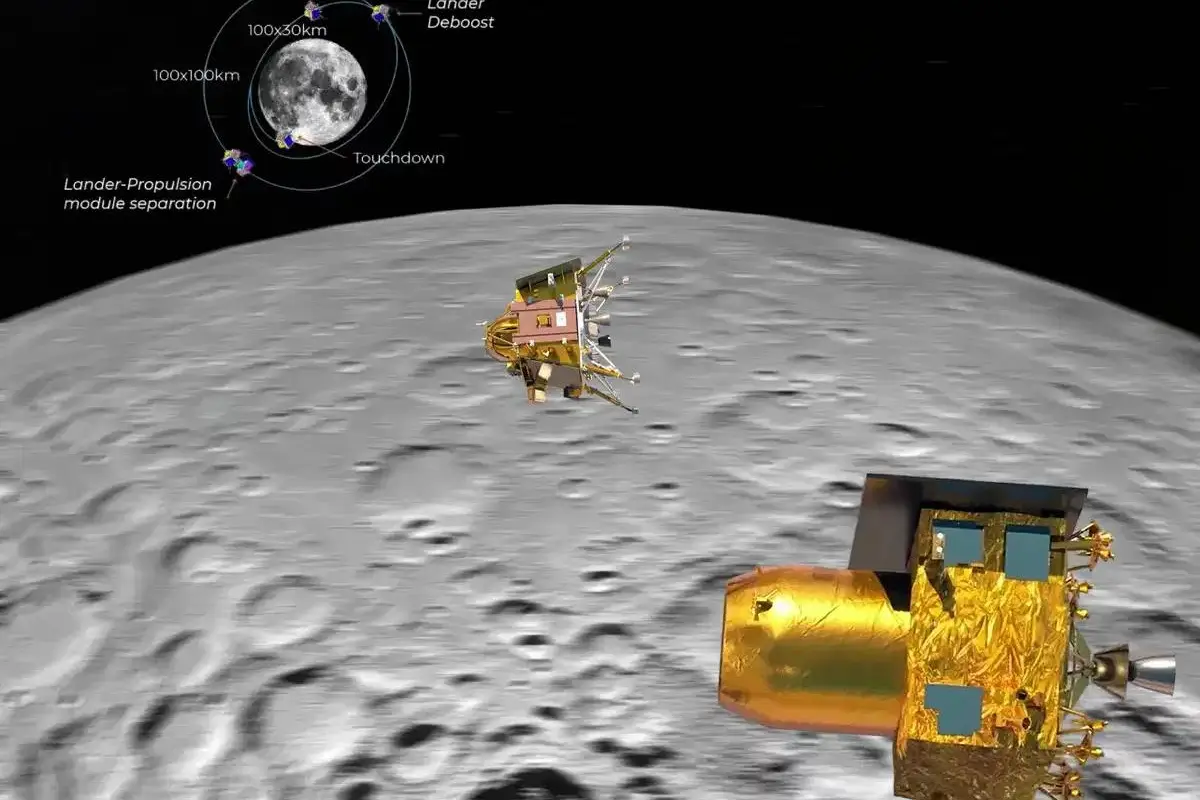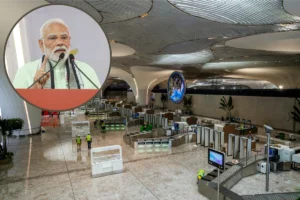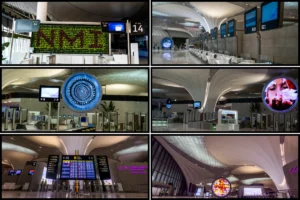
De-Boosting Chandrayaan 3
On Friday, the Indian Space Research Organisation (ISRO) achieved a successful de-boosting of Chandrayaan 3, lowering the spacecraft’s velocity in preparation for a gentle landing on the moon’s surface. This accomplishment followed the separation of the lander module (LM) from the propulsion module as part of Chandrayaan-3, India’s third lunar mission, which occurred the previous day.
“Chandrayaan-3 Mission: The Lander Module (LM) health is normal. LM successfully underwent a deboosting operation that reduced its orbit to 113 km x 157 km. The second deboosting operation is scheduled for August 20, 2023, around 0200 IST,” ISRO posted on X, formerly known as Twitter.
The next de-boosting operation will be carried out on August 20, before the landing scheduled for August 23 between 5:30pm and 6pm.
Three goals of Lunar Mission
Building upon the 2019 Chandrayaan-2 mission, the current program has three primary goals. Firstly, to showcase a secure and gentle landing on the lunar surface, a feat that was not accomplished in Chandrayaan-2. Secondly, to exhibit the capabilities of a rover on the moon’s surface. And finally, to carry out scientific experiments directly on-site.
Rover to conduct research on Moon as De-Boosting of Chandrayaan 3 goes successfully
Distinguished researchers from the space department elaborated that Chandrayaan-3 encompasses a domestically developed Lander Module (LM), Propulsion module (PM), and rover, all aimed at advancing and showcasing novel technologies essential for interplanetary endeavors. The lander is designed to execute a gentle touchdown at a designated lunar location, facilitating the deployment of the rover. This rover will conduct on-site chemical analyses of the moon’s surface as it moves about.
Spectro-polarimetry of Habitable Planet Earth payload
The space agency clarified that once the lander module is detached from the propulsion module, the latter will continue its journey around the moon for a minimum of six months. The propulsion module carries the ‘Spectro-polarimetry of Habitable Planet Earth (SHAPE)’ payload, which aims to analyze Earth’s atmosphere through spectroscopy and measure changes in polarization caused by clouds. This data will be used to identify potential habitable exoplanets.
At the same time, in terms of the landing process, the space agency will execute a de-boosting maneuver on August 18 to adjust the spacecraft’s trajectory, leading up to an attempted landing on the moon’s surface on August 23.
To read more such news, download Bharat Express news apps























